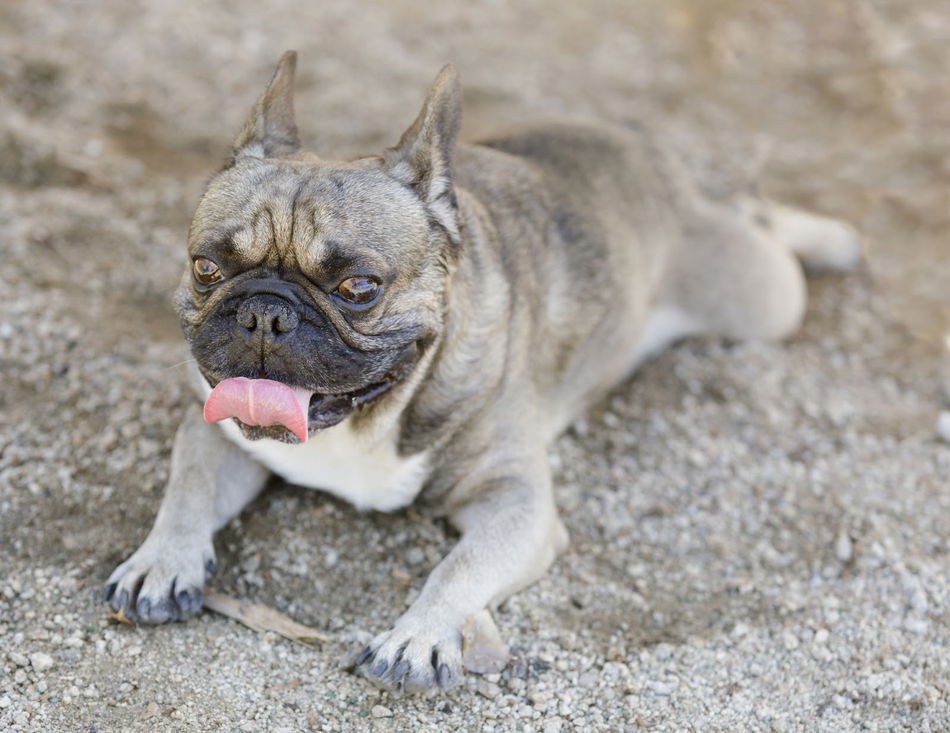
The fawn and sable variations represent some of the most striking and genetically fascinating coat colors in French Bulldogs. While fawn Frenchies display a uniform sandy-colored coat ranging from light tan to deep red, sable French Bulldogs exhibit distinctive black-tipped hairs over a fawn base coat, creating a unique "washed" appearance. Both variations stem from the "ay" allele, with sables specifically carrying the ay/at genetic combination. These colors can further combine with other genetic factors like blue, chocolate, lilac, Isabella, rojo, merle and pied patterns, showcasing the breed's remarkable color diversity. Understanding these genetics is crucial for breeders and enthusiasts alike.
Fawn Sable French Bulldog
Genetic Makeup and Expression
The genetics behind fawn sable French Bulldogs involve specific DNA combinations. According to genetic testing data, fawn sable Frenchies require the presence of both "ay" (fawn) and "at" (tan) alleles in their genetic makeup. The "ay" allele produces the characteristic fawn base coat, while the combination with "at" creates the distinctive black-tipped hairs that give sables their unique appearance. This genetic pattern allows fawn sables to express various color modifications through additional genes.
Visual Characteristics and Color Variations
Fawn sable French Bulldogs display a distinctive coat pattern characterized by dark-tipped hairs overlaying a fawn base color. The intensity of the black tipping can vary significantly between individuals, creating a spectrum of appearances from lightly tipped to heavily shaded coats. When combined with dilute genes, fawn sables can express in modified forms including:
- Blue sable - Created by the presence of the dilute gene (d/d)
- Chocolate sable - Produced by chocolate gene variants (b/b or co/co)
- Lilac sable - Results from combining both dilute and chocolate genes
- Isabella sable - Occurs with specific combinations of testable chocolate and dilute genes
The base fawn coloring can range from light tan to deep reddish hues, with the sable pattern adding depth and dimension to the coat's appearance.
Understanding Fawn Sable French Bulldogs: Genetics and Color Variations
Inheritance Patterns and Parent Combinations
While the previous report covered basic genetic makeup, this section explores inheritance patterns. According to genetic research, fawn sable coloring requires specific parent combinations to produce the desired coat pattern. At least one parent must carry the "ay" fawn gene to pass it down, while the "at" allele that creates the sable effect can come from either parent. The fawn gene is dominant over most other color genes except brindle and cream, making it highly likely to be expressed in offspring when present.
Distinguishing Features from Standard Fawns
Unlike standard fawn Frenchies discussed in previous sections, sable French Bulldogs exhibit unique identifying characteristics. The key distinction lies in the black-tipped hair pattern, which creates a distinct shading effect not present in solid fawn dogs. This tipping can vary in intensity, creating subtle variations in appearance:
- Light sabling: Minimal black tipping, creating a slight shadow effect
- Medium sabling: Moderate black tipping giving a more pronounced two-tone look
- Heavy sabling: Extensive black tipping resulting in a darker overall appearance
The sable pattern maintains visibility even when combined with dilute genes, though the tipping color changes according to the dilution factor (blue, chocolate, etc.). This distinguishes sables from standard fawns which show solid coloration throughout their coat.
Fawn Sable French Bulldog Health and Breeding Considerations
Health Monitoring Requirements
While previous reports covered visual and genetic aspects, fawn sable French Bulldogs require specific health considerations related to their coat color genetics. The presence of both "ay" and "at" alleles necessitates regular monitoring for potential skin sensitivities that can manifest differently than in solid fawn dogs. Breeders must conduct comprehensive genetic testing focused on:
- Skin and coat health markers
- Color-linked health traits
- Potential genetic complications from sable patterning
Strategic Breeding Approaches
Building on earlier genetic discussions, successful fawn sable breeding requires careful parent selection to maintain desired traits while avoiding health issues. Key breeding considerations include:
- Testing both parents for recessive genes that could impact sable expression
- Evaluating carrier status for dilute and chocolate genes
- Avoiding combinations that could produce undesired color variations
- Maintaining proper genetic diversity while preserving the sable pattern
The breeding program should prioritize both color accuracy and overall health, with special attention to preventing the intensification of any color-linked health concerns through selective breeding practices. This differs from standard fawn breeding programs which may focus primarily on solid color maintenance.
Conclusion
The research on fawn sable French Bulldogs reveals a complex genetic interplay requiring both "ay" (fawn) and "at" (tan) alleles to produce their distinctive appearance. These dogs display unique coat patterns characterized by dark-tipped hairs overlaying a fawn base color, with variations in intensity creating a spectrum from light to heavy sabling. The genetic makeup allows for multiple color modifications when combined with dilute genes, resulting in variations like blue sable, chocolate sable, lilac sable, and isabella sable.
The findings highlight important considerations for breeding and health management. Successful breeding requires careful parent selection and comprehensive genetic testing to maintain desired traits while avoiding potential health issues linked to coat color genetics. Regular monitoring for skin sensitivities specific to sable patterning is essential. Moving forward, breeders should focus on balancing color accuracy with overall health, maintaining genetic diversity while preserving the distinctive sable pattern that makes these French Bulldogs unique.